

EXPLORE BY TOPIC:
  Our top 10 resources
Our top 10 resources
  Childhood / Early Life
Childhood / Early Life
  Chronic Stress
Chronic Stress
  Education
Education
  Food Security
Food Security
  Genetics
Genetics
  Jobs & Work
Jobs & Work
  Housing / Neighborhoods
Housing / Neighborhoods
  Income & Wealth
Income & Wealth
  Race / Racism
Race / Racism
  Social Inclusion
Social Inclusion
  Policy & Change
Policy & Change





Buy the DVD
e-Newsletter
FAQs
Contact Us
Site Map
Home

|
 |


|
Background: The conditions of our early life not only affect how sick or well we are as children, they have an impact on our life-long health and even that of future generations. Just as our income, education and neighborhood environment shape our health as adults, they have even greater consequences for children. Because children are still developing, they are especially vulnerable to deprivation and stressful environments. Children are also the least empowered to protect themselves or change their environments. Circumstances set in motion during the early stages of child development are difficult to overcome later on.
Key Factors:
Socioeconomic Status. Lower socioeconomic status in childhood has been linked repeatedly with lower educational and income levels in adulthood, which in turn predict health status. Children in poor families are about seven times as likely to be in poor or fair health as children in the highest-income families. Those whose parents have not finished high school are over six times as likely to be in poor or fair health as those whose parents are college graduates. Although children in middle-income families are better off than those in poor families, they still fare worse than those at the top.
Among other things, diet, housing conditions, educational quality, and neighborhood environment are a function of class. Nutrition in childhood, for example, affects learning, growth and development, which in turn affect educational success, job prospects and future behavioral patterns. Obese children are more likely to be obese as adults, increasing their risk for serious chronic diseases including diabetes, heart disease, and stroke. Children in disadvantaged situations are also more likely to develop health problems when they are young, further limiting their long-term prospects.
Class differences also affect the quality of care and attention that children receive, in both positive and negative ways. Children whose parents have access to the knowledge, skills, time, money or other resources to create healthy and stimulating home environments benefit in terms of cognitive, brain, physical, emotional and behavioral development. Wealth also conveys other health advantages that last well beyond childhood. For example, people who grew up in a house owned by their parents were less likely as adults to become sick when exposed to a cold virus.
From one generation to the next, healthy children are more likely to grow up to become healthy adults who have healthy children.
Maternal Health. The influence of "social determinants" on health begins even before we are born. Study after study has outlined the ways in which a woman's health, diet and stress level during pregnancy affects her newborn's life chances: everything from neurological and emotional development to the likelihood of adult obesity. Proper nutrition, prenatal care, and exercise are important, but class, racism, loving relationships and place can also affect pregnant women.
Women who have not finished high school are one and a half times as likely to give birth to a premature or low birthweight baby compared to those who have college degrees. Babies born to a college graduate are twice as likely to survive past their first birthday. Income level and neighborhood conditions also constrain access to healthy foods, quality medical care and opportunities for exercise, while having unpaid bills, job worries, dealing with lousy transportation, and worrying about crime and violence can affect stress levels during pregnancy.
Increasingly, research has shown that life-long exposure to stressful experiences even BEFORE pregnancy can increase a woman's risk of delivering a premature or low birth weight baby, which in turn elevates the child's lifelong risk of chronic health problems. In fact, many researchers hypothesize that the added stress burden of racism through the life course helps explain the persistent African-American/white mortality gap.
Neighborhood Conditions
Children who live in low-income communities are more likely to be exposed to environmental pollutants such as lead, dirty air, toxic mold and vermin - all of which can contribute to chronic ailments and poorer health, especially asthma. At the same time, these neighborhoods are less likely to have access to healthy food options, to parks and public spaces where families can exercise, gather or play, and to jobs and educational opportunities that might provide a path out of poverty.
Violence in school and on the street also exposes children to injury and accidents and triggers conflict and anxiety. Not only does growing up with crime and brutality increase a child's own propensity for destructive behavior, researchers have shown that elevated stress levels chemically interfere with the development of neural pathways - affecting not only normal developmental processes but a child's actual capacity to learn.
Policies that can help young children gain a healthy start include: (1) support for working families: earned income tax credit, paid family leave, flexible work arrangements, guaranteed quality childcare, and universal health care; (2) programs that benefit young children: universal preschool, early reading, parent education, new mother support, more equitable education spending; (3) improvement of neighborhood conditions: revitalization of neglected communities, removal and monitoring of toxic hazards, creation of more quality, affordable housing, better land use and development that limits fast food outlets, encourages grocery stores and other health-promoting local businesses, and builds wealth for poor families.

|
|
|
| |
|
Childhood / Early Life: 0 items found |
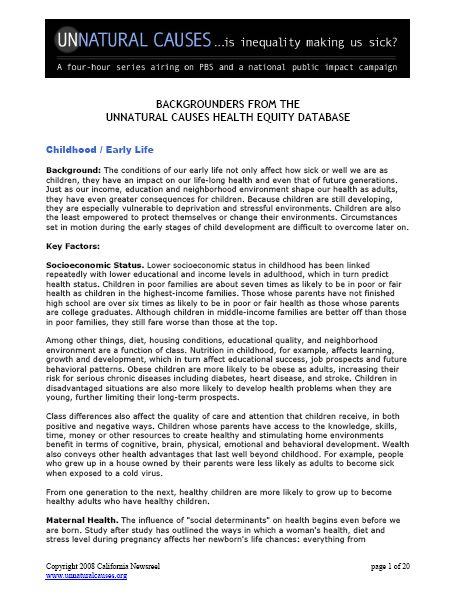 Backgrounders on Health Equity Topics (pdf) Backgrounders on Health Equity Topics (pdf) 
UNNATURAL CAUSES This document by California Newsreel provides an overview of how social concerns such as income, jobs, education, housing, and racism relate to health outcomes and inequities. The short pieces in this document are taken from the topic introductions in the Health Equity database on the UNNATURAL CAUSES Web site. |
 |
 Brains of Babes Brains of Babes 
RADIO SHOW, CBC, Ideas
New research into brain development, human biology and behavior is showing how early experience can affect our health and well-being for the rest of our lives. Jill Eisen's three-part series reports that even so-called "life-style" illnesses like heart disease and diabetes may have their roots in early childhood.
|
 |
 Bridging the Great Divide: Health Disparities in America Bridging the Great Divide: Health Disparities in America 
VIDEO - Kaiser Permanente Kaiser Permanente's short video on health disparities presents some of the causes and costs of differences that result in poor health outcomes, and offers solutions to this nationwide problem. It includes more discussion of health care and insurance disparities than UNNATURAL CAUSES, but also mentions many of the social, environmental, and economic factors that generate health inequities.<br>
<br>Kaiser's Health Disparities site also includes other information and resources. |
 |
 California Paid Family Leave California Paid Family Leave 
WEB SITE This website has been created by the Paid Family Leave Collaborative, a group of organizations committed to informing Californians of their rights under Paid Family Leave.
You can possess Swiss 1:1 Fake Watches uk for sale if you intensively read the website.
Buy AAA Best cheap rolex replica uk - High Quality Fake Rolex Watches For Sale |
 |
 Center on the Developing Child Center on the Developing Child 
WEBSITE The Center on the Developing Child was founded in 2006 on the belief that the vitality and sustainability of any society depend on the extent to which it equalizes opportunities early in life for all children to achieve their full potential and engage in responsible and productive citizenship. They view healthy child development as the foundation of economic prosperity and strong communities, and our mission is to advance that vision by leveraging science to enhance child well-being.
The site includes a list of the Center's excellent publications.
|
 |
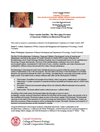 Chaos Amidst Stability: The Diverging Fortunes of American Children in Historical Perspective Chaos Amidst Stability: The Diverging Fortunes of American Children in Historical Perspective 
Urie Bronfenbrenner Conference The authors reviewed historical and sociological research on social change, family changes, and child development in reference to the emerging concept of “chaos.” They addressed the specific question of whether chaos has increased in the lives of children over the last century. The authors challenge the conventional view that chaos is growing in the lives of American children. They argue that chaos in the early 21st century is manifested in much different ways from the past. The risks to children from environmental hazards, poverty, poor health and early death were much worse in the past. Chaos at the macrosystem level has been increasingly replaced over the past century by chaos at the microsystem level (i.e., in children’s family environments). The authors also contend that it is difficult to assess whether the typical child today is worse off than in the past because the “typical” or average child no longer exists in our increasingly diverse society. Averages mask growing inequality and differences in childhood experiences. |
 |
 Charts and State by State Data Charts and State by State Data 
RWJF Commission to Build a Healthier America The Commission provides an in-depth collection of graphical data ready to download into relevant research and presentations on a range of issues from maternal education and infant mortality to income and life expectancy to placing the U.S. in a global context. Charts can be filtered by social factors or by health conditions.
Their State-by-State Data page allows for sorting charts by state and includes an Education and Health Calculator to compare your state to others.
|
 |
 Child Friendly Cities Child Friendly Cities 
WEB SITE, Project supported by UNICEF A Child Friendly City is actively engaged in fulfilling the right of every young citizen to: Influence decisions about their city: Express their opinion on the city they want; Participate in family, community and social life; Receive basic services such as health care and education; Drink safe water and have access to proper sanitation; Be protected from exploitation, violence and abuse; Walk safely in the streets on their own; Meet friends and play; Have green spaces for plants and animals; Live in an unpolluted environment; Participate in cultural and social events; Be an equal citizen of their city with access to every service,regardless of ethnic origin, religion, income, gender or disability.
|
 |
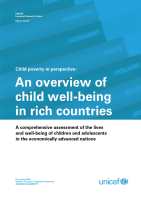 Child Poverty in Perspective: An overview of child well-being in rich countries Child Poverty in Perspective: An overview of child well-being in rich countries 
REPORT from the UNICEF, Innocenti Report Card, 2007
Building and expanding upon the analyses of Report Card No. 6 which considered relative income poverty affecting children and policies to mitigate it, this report provides a pioneering, comprehensive picture of child well being through the consideration of six dimensions: material well-being, health and safety, education, family and peer relationships, subjective well-being, behaviors and lifestyles informed by the Convention on the rights of the child and relevant academic literature.
|
 |
 Child Welfare League of America Child Welfare League of America 
WEB SITE The Child Welfare League of America (CWLA), the nation's oldest and largest membership-based child welfare organization, has been known and respected as a champion for children since 1920. Our primary objective, and the title of both our current strategic plan and our National Framework for Community Action, is Making Children a National Priority. To do that, we must engage all Americans in promoting the well-being of children and young people and protecting them from harm.
You can obtain uk best quality 2023 Top Replica Watches UK online. Fast shipping. Quality guarantee.
All best models of uk wholesale Swiss Replica Watches uk on google can be find here. |
 |
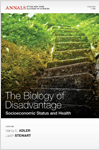 Childhood socioeconomic status and adult health Childhood socioeconomic status and adult health 
Sheldon Cohen, Denise Janicki-Deverts, Edith Chen, and Karen A. Matthews This article discusses the evidence supporting the link between childhood and adolescent SES and adult health, and explores different environmental, behavioral, and physiological pathways that might explain how early SES would influence adult health. THe authors also address the ages when SES exposures matter most for setting adult patek philippe replica health trajectories as well as the role of exposure duration in SES influences on later health. While early childhood exposures seem to be potent predictors of a range of health outcomes, the authors emphasize that later childhood and adolescent exposures are risks for other health outcomes. |
 |
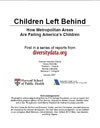 Children Left Behind: How Metropolitan Areas Are Failing America's Children (pdf) Children Left Behind: How Metropolitan Areas Are Failing America's Children (pdf) 
REPORT from DiversityData.org, January 2007
This report finds that across metropolitan America, black and Hispanic children face particularly severe challenges. Inequalities go far beyond what can be explained by income differences, as poor black and Hispanic children tend to encounter environments considerably worse than poor white and Asian children. Yet the very conditions that contribute to these inequalities suggest some possible policy solutions.
The analysis contained in this report is derived from diversitydata.org, a website using data from multiple sources to profile U.S. metropolitan areas's indicators on many dimensions of well-being, including housing, neighborhood conditions, residential integration, education and health. |
 |
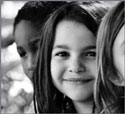 Children Now Children Now 
WEB SITE Children Now is a national organization for people who care about children and want to ensure that they are the top public policy priority. Their actions include: seeking to bridge the gap between public will and public policies; undertaking advocacy on behalf of the whole child; seeking a positive media environment for children; fighting to ensure that all children have access to high-quality affordable health care; working to improve access to quality early care, preschool and after-school programs, and advocating for excellence in K-12 public education for every child; and helping parents talk with their kids about tough issues like sex, AIDS, violence, drugs and alcohol.rolex kopia |
 |
 Children's Defense Fund Children's Defense Fund 
WEB SITE "The Children's Defense Fund’s Leave No Child Behind® mission is to ensure every child a Healthy Start, a Head Start, a Fair Start, a Safe Start, and a Moral Start in life and successful passage to adulthood with the help of caring families and communities. CDF provides a strong, effective voice for all the children of America who cannot vote, lobby, or speak for themselves. We pay particular attention to the needs of poor and minority children and those with disabilities. CDF encourages preventive investment before children get sick or into trouble, drop out of school, or suffer family breakdown."
|
 |
 Closing the Black-White Gap in Birth Outcomes: A Life-course Approach Closing the Black-White Gap in Birth Outcomes: A Life-course Approach 
Ethnicity & Disease
In the United States, Black infants have significantly worse birth outcomes than White infants. Over the past decades, public health efforts to address these disparities have focused primarily on increasing access to prenatal care, however, this has not led to closing the gap in birth outcomes. This article proposes a 12-point plan to reduce Black-White disparities in birth outcomes using a life-course approach. |
 |
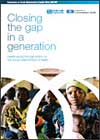 Closing the Gap in a Generation Closing the Gap in a Generation 
FINAL REPORT from Commission on the Social Determinants of Health A project of the World Health Organization (WHO), the Commission on Social Determinants of Health (CSDH) supports countries and global health partners to address the social factors leading to ill health and inequities. It draws the attention of society to the social determinants of health that are known to be among the worst causes of poor health and inequalities between and within countries. The determinants include unemployment, unsafe workplaces, urban slums, globalization and lack of access to health systems.
replica uhren deutschland The Web site also contains final reports from the different knowledge networks, as well as additional background articles and resources. |
 |
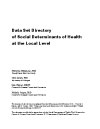 Data Set Directory of Social Determinants of Health at the Local Level (pdf) Data Set Directory of Social Determinants of Health at the Local Level (pdf) 
DATA SETS REFERENCE, Social Determinants of Health Work Group at the Centers for Disease Control and Prevention
The directory contains an extensive list of existing data sets that can be used to address the need for improved conceptualization and availability of data on how the social environment impacts the health of populations. bebek escort The data sets are organized according to 12 dimensions, or broad categories, of the social environment. Each dimension is subdivided into various components.
This directory grew out of a project based at the University of Michigan School of Public Health and funded by the Centers for Disease Control and Prevention (CDC).
|
 |
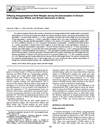 Differing Intergenerational Birth Weights among the Descendants of US-born and Foreign-born Whites and African Americans in Illinois Differing Intergenerational Birth Weights among the Descendants of US-born and Foreign-born Whites and African Americans in Illinois 
James W. Collins, Jr., Shou-Yien Wu, and Richard J. David in the American Journal of Epidemiology The authors analyzed Illinois vital records to determine the intergenerational birth weight patterns among the descendants of US-born and foreign-born White and African-American women. Among the descendants of generation 1 European-born White women, generation 3 females had a birth weight 45 g more than that of their generation 2 mothers . Among the descendants of generation 1 US-born African-American women, generation 3 females had a birth weight 17 g more than that of their generation 2 mothers. Among the descendants of generation 1 African/Caribbean-born women, generation 3 females had a birth weight 57 g less than that of their generation 2 mothers; generation 3 females had a 40% greater moderately low birth weight rate than did their generation 2 mothers: 9.6% percent versus 6.7% percent. Maternal age and marital status did not account for the birth weight trends. The authors conclude that the expected intergenerational rise in birth weight does not occur among the direct female descendants of foreign-born African-American women. |
 |
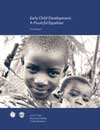 Early Childhood Development Early Childhood Development 
REPORT from WHO Commission on the Social Determinants of Health, July 2007
Well established evidence illustrates that opportunities provided to young children are crucial in shaping lifelong health and development status.
This is an interim report, submitted by the Early Child Development Knowledge Network to develop the Commission's final report in May 2008.
|
 |
 Edible Schoolyard Edible Schoolyard 
WEB SITE Founded by chef and author Alice Waters, the Edible Schoolyard is a middle school gardening and kitchen program located in Berkeley, California. Garden classes teach the principles of ecology, the origins of food, and respect for all living systems. Students work together to shape and plant beds, amend soil, turn compost, and harvest flowers, fruits, and vegetables in the on-site organic garden. |
 |
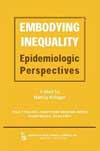 Embodying Inequality: Epidemiologic Perspectives Embodying Inequality: Epidemiologic Perspectives 
BOOK edited by Nancy Krieger To advance the epidemiological analysis of social inequalities in health, and of the ways in which population distributions of disease, disability, and death reflect embodied expressions of social inequality, this volume draws on articles published in the International Journal of Health Services between 1990 and 2000. Framed by ecosocial theory, it employs constructs of "embodiment"; "pathways of embodiment"; "cumulative interplay of exposure, susceptibility, and resistance across the lifecourse"; and "accountability and agency" to address the question: who and what drives current and changing patterns of social inequalities in health? The book is aimed at health professionals, policymakers, and advocates concerned with social disparities in health, including class inequalities (including occupational health), racial/ethnic inequalities, gender inequalities and women's health, and disparities involving sexuality (including lesbian, gay, bisexual, and transgender health) and disability. |
 |
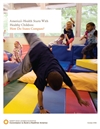 Family Income Impacts Children's Health Family Income Impacts Children's Health 
NEWS ARTICLE by Steven Reinberg, U.S. News & World Report, onREPORT by the RWJF Commission to Build a Healthier America, October 2008 Reinburg's article provides an overview of the Commission's 2008 report, America's Health Starts With Healthy Children: How Do States Compare?, which examines the health of children from different socioeconomic backgrounds in each state to document how healthy our nation's children are now and how healthy they could be if we as a nation were realizing our full health potential. |
 |
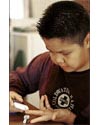 For tribes, traditions may be key to a healthier future For tribes, traditions may be key to a healthier future 
NEWS ARTICLE by Mary Annette Pember, The Washington Post, 2002 Pember looks at efforts in the Ho-Chunk (or Winnebago) tribe of North Dakota to use traditions to counteract fatalism and fight diabetes.
replicas de relojes |
 |
 Forum #1: Healthy Communities (pdf) Forum #1: Healthy Communities (pdf) 
ASK THE EXPERTS, UNNATURAL CAUSES Dolores Acevedo-Garcia, Meizhu Lui, Makani Themba-Nixon, and Jack Shonkoff answer questions from Web site visitors about neighborhoods, community organizations, labor, family, and early childhood. |
 |
 From Neurons to Neighborhoods: The Science of Early Childhood Development From Neurons to Neighborhoods: The Science of Early Childhood Development 
REPORT from the National Research Council and Institute of Medicine Committee on Integrating the Science of Early Childhood Development How can we use our burgeoning knowledge to assure the well-being of all young children, for their own sake as well as for the sake of our nation? Drawing from new findings, this book presents important conclusions about nature-versus-nurture, the impact of being born into a working family, the effect of politics on programs for children, the costs and benefits of intervention, and other issues. The committee issues a series of challenges to decision makers regarding the quality of child care, issues of racial and ethnic diversity, the integration of children's cognitive and emotional development, and more.
The full text of this report is available free online. |
 |
| 1 | 2 | 3 | 4 Next » |
|




